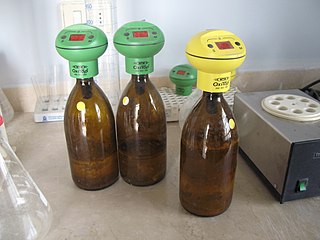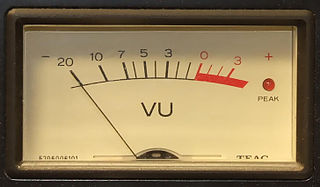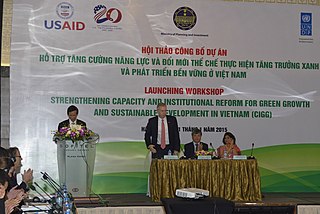Related Research Articles
Standard of living is the level of income, comforts and services available, generally applied to a society or location, rather than to an individual. Standard of living is relevant because it is considered to contribute to an individual's quality of life. Standard of living is generally concerned with objective metrics outside an individual's personal control, such as economic, societal, political and environmental matters – such things that an individual might consider when evaluating where to live in the world, or when assessing the success of economic policy.

An autoclave is a machine used to carry out industrial and scientific processes requiring elevated temperature and pressure in relation to ambient pressure and/or temperature. Autoclaves are used before surgical procedures to perform sterilization and in the chemical industry to cure coatings and vulcanize rubber and for hydrothermal synthesis. Industrial autoclaves are used in industrial applications, especially in the manufacturing of composites.
A torque wrench is a tool used to apply a specific torque to a fastener such as a nut, bolt, or lag screw. It is usually in the form of a socket wrench with an indicating scale, or an internal mechanism which will indicate when a specified (adjustable) torque value has been reached during application.

Sterilization refers to any process that removes, kills, or deactivates all forms of life and other biological agents such as prions present in or on a specific surface, object, or fluid. Sterilization can be achieved through various means, including heat, chemicals, irradiation, high pressure, and filtration. Sterilization is distinct from disinfection, sanitization, and pasteurization, in that those methods reduce rather than eliminate all forms of life and biological agents present. After sterilization, an object is referred to as being sterile or aseptic.

Biochemical oxygen demand is an analytical parameter representing the amount of dissolved oxygen (DO) consumed by aerobic bacteria growing on the organic material present in a water sample at a specific temperature over a specific time period. The BOD value is most commonly expressed in milligrams of oxygen consumed per liter of sample during 5 days of incubation at 20 °C and is often used as a surrogate of the degree of organic water pollution.

A volume unit (VU) meter or standard volume indicator (SVI) is a device displaying a representation of the signal level in audio equipment.

A bioindicator is any species or group of species whose function, population, or status can reveal the qualitative status of the environment. The most common indicator species are animals. For example, copepods and other small water crustaceans that are present in many water bodies can be monitored for changes that may indicate a problem within their ecosystem. Bioindicators can tell us about the cumulative effects of different pollutants in the ecosystem and about how long a problem may have been present, which physical and chemical testing cannot.
Redox potential is a measure of the tendency of a chemical species to acquire electrons from or lose electrons to an electrode and thereby be reduced or oxidised respectively. Redox potential is expressed in volts (V). Each species has its own intrinsic redox potential; for example, the more positive the reduction potential, the greater the species' affinity for electrons and tendency to be reduced.
Oxygen radical absorbance capacity (ORAC) was a method of measuring antioxidant capacities in biological samples in vitro. Because no physiological proof in vivo existed in support of the free-radical theory or that ORAC provided information relevant to biological antioxidant potential, it was withdrawn in 2012.

Capacity building is the improvement in an individual's or organization's facility "to produce, perform or deploy". The terms capacity building and capacity development have often been used interchangeably, although a publication by OECD-DAC stated in 2006 that capacity development was the preferable term. Since the 1950s, international organizations, governments, non-governmental organizations (NGOs) and communities use the concept of capacity building as part of "social and economic development" in national and subnational plans. The United Nations Development Programme defines itself by "capacity development" in the sense of "'how UNDP works" to fulfill its mission. The UN system applies it in almost every sector, including several of the Sustainable Development Goals to be achieved by 2030. For example, the Sustainable Development Goal 17 advocates for enhanced international support for capacity building in developing countries to support national plans to implement the 2030 Agenda.
Ecological indicators are used to communicate information about ecosystems and the impact human activity has on ecosystems to groups such as the public or government policy makers. Ecosystems are complex and ecological indicators can help describe them in simpler terms that can be understood and used by non-scientists to make management decisions. For example, the number of different beetle taxa found in a field can be used as an indicator of biodiversity.

Soil quality refers to the condition of soil based on its capacity to perform ecosystem services that meet the needs of human and non-human life.
Biological integrity is associated with how "pristine" an environment is and its function relative to the potential or original state of an ecosystem before human alterations were imposed. Biological integrity is built on the assumption that a decline in the values of an ecosystem's functions are primarily caused by human activity or alterations. The more an environment and its original processes are altered, the less biological integrity it holds for the community as a whole. If these processes were to change over time naturally, without human influence, the integrity of the ecosystem would remain intact. The integrity of the ecosystem relies heavily on the processes that occur within it because those determine what organisms can inhabit an area and the complexities of their interactions. Most of the applications of the notion of biological integrity have addressed aquatic environments, but there have been efforts to apply the concept to terrestrial environments. Determining the pristine condition of the ecosystem is in theory scientifically derived, but deciding which of the many possible states or conditions of an ecosystem is the appropriate or desirable goal is a political or policy decision and is typically the focus of policy and political disagreements. Ecosystem health is a related concept but differs from biological integrity in that the "desired condition" of the ecosystem or environment is explicitly based on the values or priorities of society.

A biodiversity action plan (BAP) is an internationally recognized program addressing threatened species and habitats and is designed to protect and restore biological systems. The original impetus for these plans derives from the 1992 Convention on Biological Diversity (CBD). As of 2009, 191 countries have ratified the CBD, but only a fraction of these have developed substantive BAP documents.
The Life Quality Index (LQI) is a calibrated compound social indicator of human welfare that reflects the expected length of life in good health and enhancement of the quality of life through access to income. The Life Quality Index combines two primary social indicators: the expectancy of healthy life at birth, E, and the real gross domestic product per person, G, corrected for purchasing power parity as appropriate. Both are widely available and accurate statistics.
A bier is a flat frame used to carry a corpse to burial.

Trimecaine (systematic name (2,4,6-trimethylphenylcarbamoylmethyl)diethylammonium chloride, chemical formula C15H25ClN2O) is an organic compound used as a local anesthetic and cardial antiarrhythmic. It is white crystalline powder readily soluble in water and ethanol. It is an active ingredient in products available under trademarks Mesdicain, Mesocain, Mesokain and others.
The Energy efficiency in Europe study is part of the Odyssee project. It aims to monitor energy efficiency progress and CO2-reduction for the EU-28 countries and Norway, understand the energy demand trends for European countries, compare the countries in their relative energy efficiency performance, as well as to benchmark values, measuring the contribution of innovative energy efficiency and renewables technologies to the Lisbon targets to make Europe more competitive and analyse and evaluate the performance of energy efficiency policies in the different EU Member States and at EU level.

The Assistant Secretary of Defense for Nuclear, Chemical & Biological Defense Programs, or ASD(NCB), is the principal adviser to the Secretary of Defense, Deputy Secretary of Defense and the Under Secretary of Defense for Acquisition and Sustainment on policy and plans for nuclear, chemical, and biological defense programs.

Intravenous regional anesthesia (IVRA) or Bier's block anesthesia is an anesthetic technique on the body's extremities where a local anesthetic is injected intravenously and isolated from circulation in a target area. The technique usually involves exsanguination of the target region, which forces blood out of the extremity, followed by the application of pneumatic tourniquets to safely stop blood flow. The anesthetic agent is intravenously introduced into the limb and allowed to diffuse into the surrounding tissue while tourniquets retain the agent within the desired area.
References
- ↑ James P. Agalloco (August 2007). "Innovation in Biological Indicator Evaluator Resistometer Vessel Technology". PharmTech.com. Retrieved 6 June 2019.